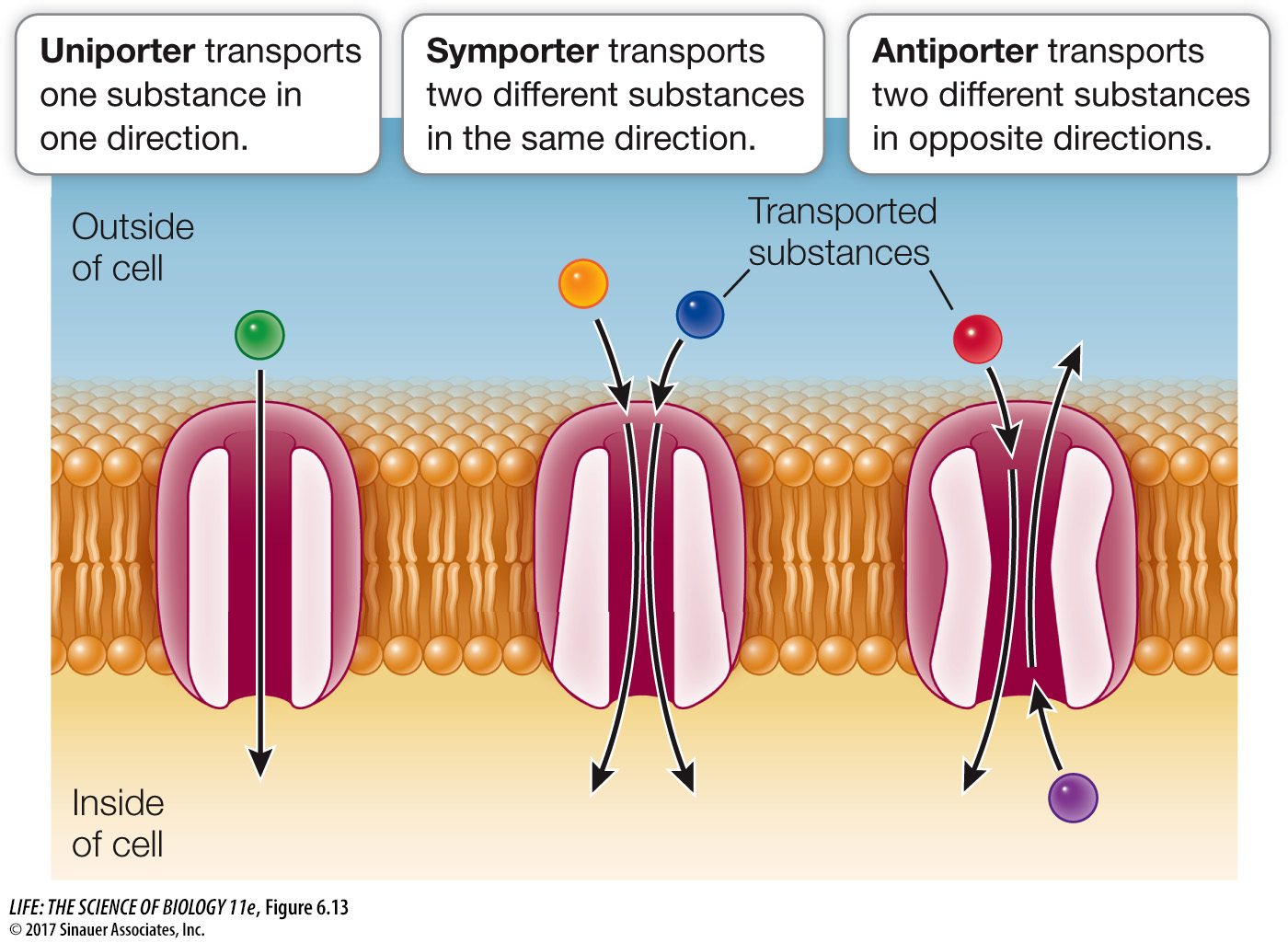Active transport is directional
In diffusion, ions or molecules can move down their concentration gradients in either direction across the cell membrane. In contrast, active transport is directional, and moves a substance either into or out of the cell or organelle, depending on need. There are three kinds of membrane proteins that carry out active transport (Figure 6.13):
A uniporter moves a single substance in one direction. For example, a calcium-
binding protein found in the cell membrane and the ER membranes of many cells actively transports Ca2+ to locations where it is more highly concentrated, either outside the cell or inside the lumen of the ER. A symporter moves two substances in the same direction. For example, a symporter in the cells that line the intestine must bind Na+ in addition to an amino acid in order to absorb amino acids from the intestine.
An antiporter moves two substances in opposite directions, one into the cell (or organelle) and the other out of the cell (or organelle). For example, many cells have a sodium–
potassium pump that moves Na+ out of the cell and K+ into it.

125
Symporters and antiporters are also known as coupled transporters because they move two substances at once.